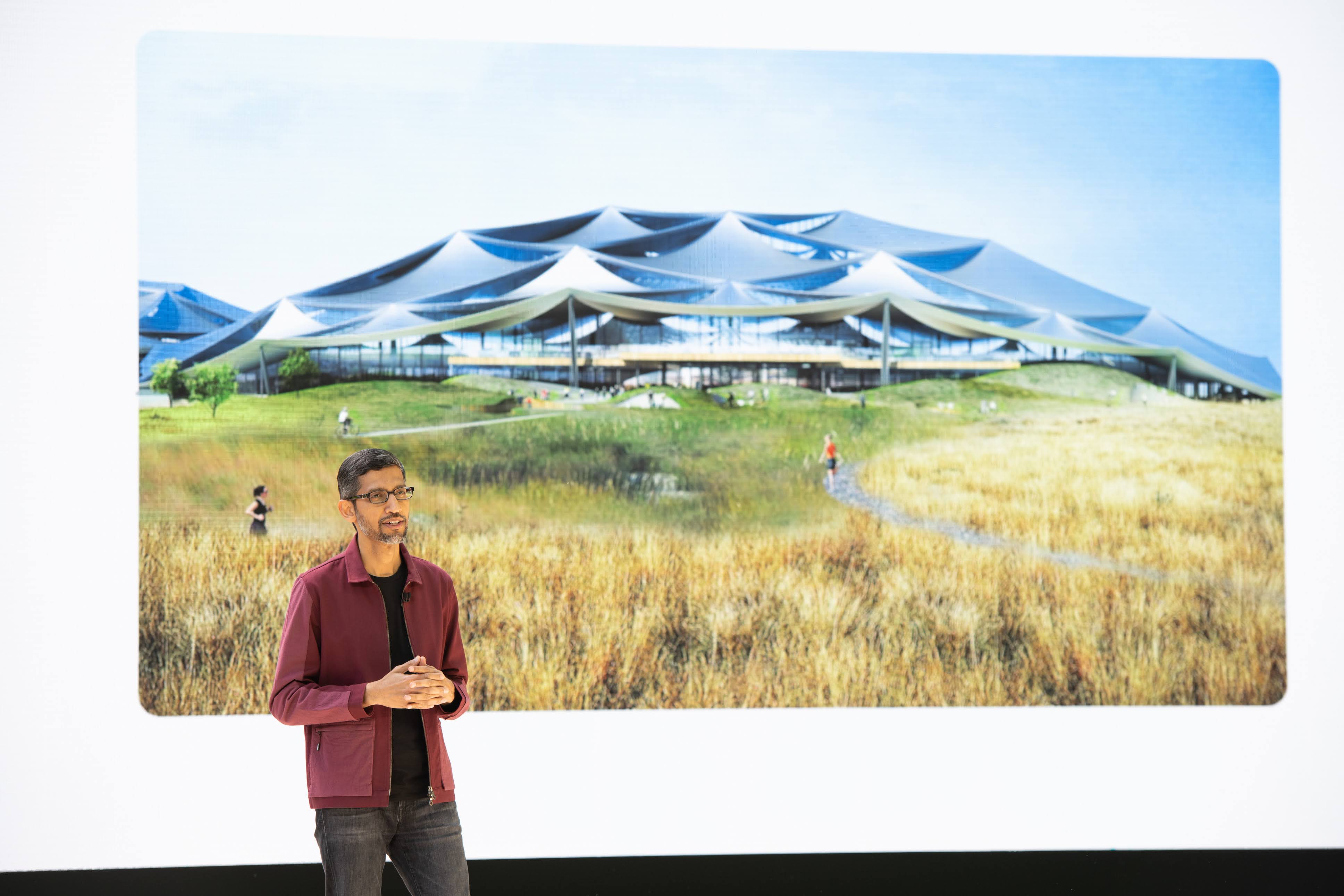Google CEO Sundar Pichai speaks at the company’s 20201 Google I/O conference.
Google announced a slew of updates to its developer products Tuesday at its first Google I/O event since 2019.
Though Google makes most of its money from advertising, the annual event is a way to excite its developer ecosystem with updates ranging from software and artificial intelligence moonshots to shopping features. The company cancelled the annual developer conference last year due to the Covid-19 pandemic. This year’s event was mostly virtual, with a few in-person attendees at the company’s headquarters in Mountain View, Calif.
Here’s a roundup of some of the more interesting announcements from the day’s event:
Hardware
This year’s event was pretty light on hardware announcements — no big unveiling or refresh to its Pixel phones or home speakers. It did, however, announce some updates to existing products.
Most notably, Google said it now has a whopping 3 billion active Android devices, globally, well ahead of Apple‘s claim of 1 billion iPhones. However, Android devices are widely divergent in terms of the version of the platform they run, with some relying only on the core open-source code and others relying on custom apps and skins issued by hardware makers and carriers.
The company announced its latest operating system update called Android 12, which works on a reduced server CPU time by 22%, essentially meaning “basically, everything is faster,” said Google’s Vice President of Android and Google Play Sameer Samat said.
Google executives said it’s combining Wear, Google’s wearable tech software platform, with Samsung’s Tizen software. It will aim to streamline the smartwatch OS for the Android platform along with faster load times and battery life improvement.
The company also said it will be bringing YouTube Music app for Wear OS later this year.
Fitbit CEO James Park said that Google Wear will include Fitbit popular features such as tracking healthy progress with plans for more. Google parent company Alphabet finally closed its $2.1 billion acquisition of the fitness-tracking company in January after regulators took more than a year to sign off on the proposed deal.
“In the future, we’ll be building premium smart watches based on Wear that combines the best of Fitbit’s healthcare expertise with Google’s ambient computing capabilities,” Park said, referring to Google’s aim to place computing in all spaces.
Shopping
The company announced a few updates in its push for e-commerce as it aims to compete with Amazon.
The company announced a deepened partnership with Shopify, by letting the company’s more than 1 million merchants make their products more discoverable in Google Search and elsewhere. It will allow Shopify businesses to appear across Google Search, Maps, Lens, Images and YouTube “with just a few clicks.” Shopify’s stock popped as much as 4% on the news.
Separately, the company announced other enhancements to its e-commerce functionality: For instance, Google’s Chrome browser will persistently display shopping carts when people open new tabs, so they can return to shopping after doing other tasks.
Collaboration tech
Google also announced some updates to make collaboration easier within its Workplace products. The industry, which also includes Microsoft Teams, Zoom and Slack, saw a surge in usage during the pandemic.
A new feature in Workspace called smart canvas will let people tag other users in a documents and the call through its video platform, Google Meet, directly from a document, spreadsheet or slide.
The company also showed off an early research project called Project Starline which builds a 3D image of a person that can be used for conversations in a meeting. It appears as a type of a hologram chat.
CEO Sundar Pichai stressed that Project Starline is still in the early stages but that some employees have been testing it amid efforts to collaborate between separate locations during the pandemic. It’s planning trial deployments with enterprise partners later this year.
Artificial intelligence
Google is best known for its artificial intelligence technology, which powers its products from Search to self-driving cars. Executives said Tuesday that it’s getting even smarter.
Pichai unveiled LaMDA, a breakthrough in natural language processing, which aims to make conversations and searches more natural while having the ability to answer more open-ended questions. Pichai gave the example of a person heaving a conversation with the planet Pluto, which gave answers to questions the user had about it.
Execs also announced a “Multitask Unified Model” it calls MUM, which they said is 1,000 times more powerful than the BERT model powering Google Search. Pulling data from texts, images and videos, MUM can supposedly answer complex questions about what a user might need for, say, a specific hike on Mt. Fuji.
Google also announced its first campus dedicated to quantum computing. The Quantum AI campus in Santa Barbara, Calif., includes a data center, research laboratories, and its own quantum processor chip fabrication facilities. “These new computing capabilities will help to accelerate the discovery of better batteries, energy-efficient fertilizers, and targeted medicines, as well as improved optimization, new AI architectures, and more,” the company says.
Speaking at her first Google I/O, Google’s chief health officer Karen DeSalvo, the former Obama administration official who joined the company in 2019, said that the company is helping create a device that uses AI to detect skin conditions. After users upload three different photos from skin, hair or nail issues and answer some questions, it’ll offer a diagnosis of possible dermatological conditions along with some information about them.
DeSalvo said the product will be accessible from internet browsers and cover 288 conditions, including 90% of the most commonly searched derm-related questions on Google. It will first be available to consumers in the European Union by the end of the year, she said.

